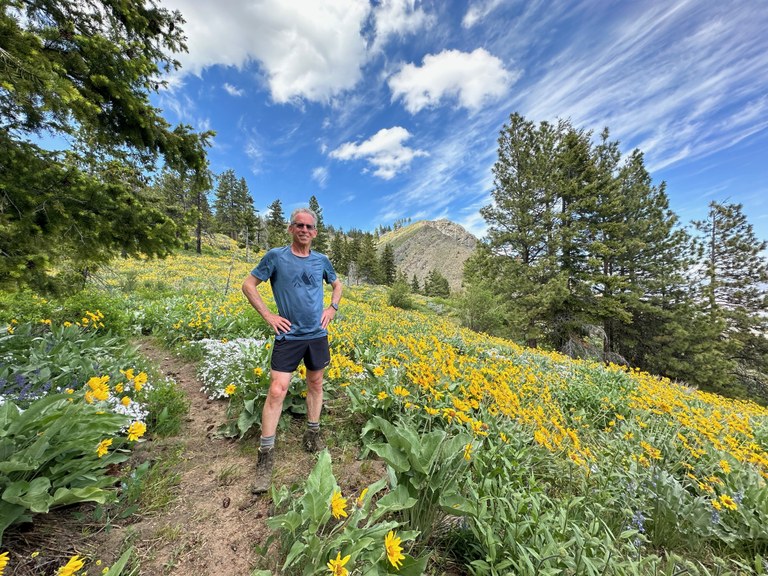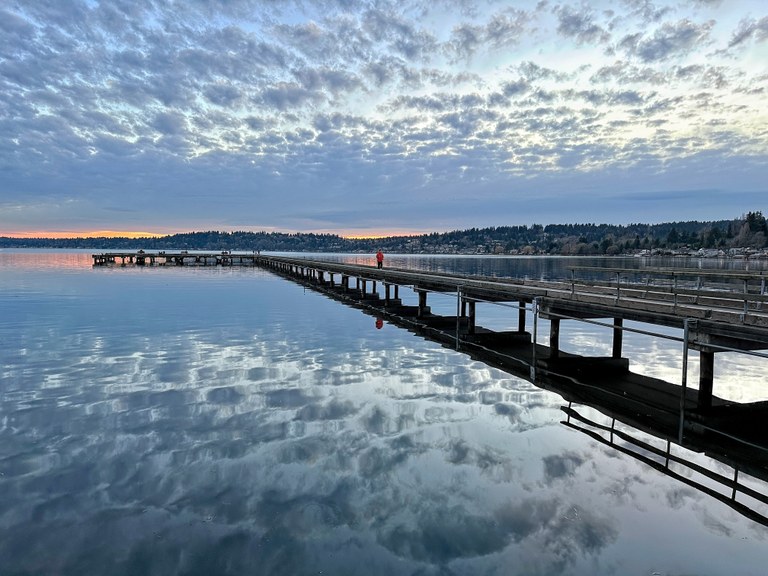 Washington Trails
Association
Washington Trails
Association
Trails for everyone, forever
Tips and tricks on how to wield a wide-angle lens to capture your hiking adventures. By Doug Diekema
A wide-angle lens is an essential part of the hiker’s camera bag. Even if your only camera is your phone, it includes at least one wide-angle lens. While a wide-angle lens is great at some photographic challenges, it is terrible at others, and understanding the strengths and shortcomings of this lens will help improve your photography.
Wide-angle lenses have a field of view greater than that of the human eye, which usually translates into a focal length of less than about 35 mm. Be aware that the default lens on most phone cameras falls into the wide-angle category. For example, the iPhone Max has four lens settings: the 0.5x (ultra-wide setting) is 13 mm and the 1x (normal setting) is 24 mm, both wide-angle lenses. The 2x “telephoto” setting is 48 mm, which approximates a standard lens.

A wide-angle lens can help add depth to your picture. Photo by Doug Diekema
Wide-angle lenses provide greater field of view, allowing the photographer to fit more of a landscape into the image. But the lens also “pushes” distant objects farther away, making them appear even smaller.
On the other hand, objects close to the lens will appear larger. The optics of these lenses causes other predictable effects. The wider the field of view, the more distortion you will notice, especially around the edges of the image. Straight lines may begin to bow (which worsens if you tilt the camera up or down), and close objects near the edges may appear elongated.
You may also see vignetting (darkening) in the corners of the photo and images may lose sharpness at the edges. Finally, wide-angle lenses often provide a deep depth of field, allowing sharpness from foreground to background.

Wide-angle photos work well to showcase images with a strong focal point or when you want the subject and the background to both be in clear focus. Photo by Doug Diekema
A wide-angle lens is a great choice for compositions with a strong focal point in the foreground — a hiker close, a flower — when you also want a sharp background. This is why a wide-angle lens is usually used for “selfie” photography. A wide-angle lens will also “open up” tight spaces — like a narrow canyon or a mountain that is too close to capture with a standard lens. Finally, a wide-angle-lens is a good for capturing expansive landscapes with vertical and horizontal interest — such as the Milky Way with mountains in the background.
Trying to capture everything is often the path to a disappointing image. You may fit everything, but often at the expense of a compelling composition. Distant landscape features often appear tiny and lack detail. Without a strong foreground, the image may lack a compelling focal point, and much of the photo’s real estate may be taken up by a bland sky or other elements that detract from, rather than enhance, the photo. If you really want to fit “everything” in, consider using something like a 70 mm lens to create a panorama or use the telephoto lens on your camera in panoramic mode.
Wide-angle lenses can distort features close to the lens, like faces, arms and legs. Sometimes that will make for a fun photo, but it’s not likely to be flattering so be mindful.
Finally, a wide-angle lens is absolutely the wrong lens for wildlife photography — the animal will appear tiny, and if it doesn’t, you are too close.
Wide-angle lenses are ideal for accentuating interesting foregrounds while keeping more distant landscape features in focus. Compose the image with something interesting in front, and get close to that object. Wide-angle photos are best when the image contains multiple layers of depth — an interesting foreground, middle and background. Use landscape features like fences, lines in the sand or a trail to lead the viewer’s eye from the foreground to a distant focal point.

Use landscape features to lead the viewer’s eye from the foreground to a distant focal point. Photo by Doug Diekema
Be clear about what makes the scene special. Is it the foreground flowers, the dramatic clouds, the brilliant Milky Way above a mountain range or a leaf on the trail? Make that the focal point.
Pay attention to distortion, especially along the edges and corners. Keeping the camera level with the horizon will minimize distortion. Be mindful of the distorting effect of these lenses on faces, arms and legs that are near the camera.
Wide-angle photography helps us see the world differently. The rules of composition still apply (good light, an off-center focal point, the rule of thirds, leading lines), but a wide-angle lens can provide unique creative opportunities. Don’t expect every wide-angle shot to work, but by playing with different lenses and focal lengths, you may surprise yourself with an image that provides a unique perspective on the landscape you’re hiking through.